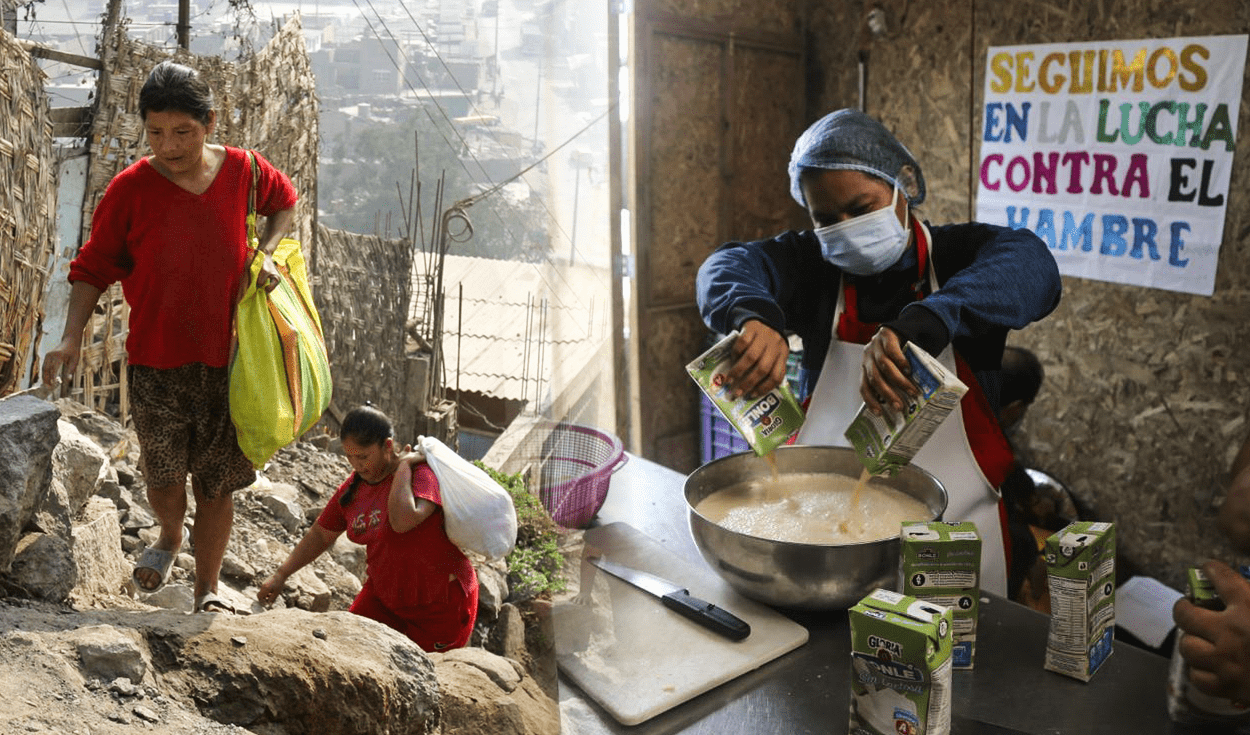
Not only did monetary poverty increase in our country, but the calorie deficit also did so and reached 36.1% in the last quarter of 2023, according to official data from the National Institute of Statistics and Informatics (INEI). This indicator measures the amount of calories consumed by a household according to a reference standard that considers a subsistence minimum.
In that sense, the figures are unobjectionable. While Peru’s Gross Domestic Product has grown 152% between 2001 (S/223,580) and 2023 (S/564,261), hunger has not been reduced. To analyze the INEI data regarding the complex food situation in our country, we spoke with Farid Matuk, former head of said entity, and with Jessica Huamán, dean of the College of Nutritionists of Lima.
Calorie deficit increased by 2.8% in the last 23 years
For the second consecutive year, monetary poverty in Peru increased and now stands at 29%. In other words, 3 out of every 10 Peruvians are poor because their income does not exceed the cost of a basic consumption basket of food plus essential services and goods such as health, education, transportation and housing. Let us remember that by 2023, this basket rose to S/446 per month for each person and extreme poverty increased to 5.7%, a figure that is higher than the levels of the COVID-19 pandemic.
But these indicators are not the only ones that show the Government’s poor management. The quality of Peruvian nutrition has been deteriorating in recent years and it is estimated that 36.1% of citizens are hungry, according to the Technical Report on Living Conditions in Peru with the results of the National Household Survey (Enaho ), and from 2023 the Permanent National Employment Survey (EPEN).
“There is a graph prepared by a French official who works within the INEI (Javier Herrera) and that ratifies this trend. It shows how poverty has increased in the last 19 years and by 2023, the caloric deficit has the record of the current century. There has never been so much hunger in the country before, and what we have is that this is equivalent to more than 30%, while extreme poverty is only 6%.“said Farid Matuk, former head of the National Institute of Statistics and Informatics (INEI).
In the case of Metropolitan Lima, the figures are getting worse and if a comparison is made with data from 2016, the incidence of poverty has almost tripled, since it went from 11% to 28.7%. It is estimated that 4 out of every 10 citizens of the capital are currently hungry and the calorie deficit affected 39.3% of the population.
“Monetary poverty has been concentrated mostly in urban areas. According to Endes, by 2023, the levels of anemia and chronic malnutrition have also increased. For example, in urban areas, the latter has increased from 7.1% to 8.1% and anemia from 39% to 40.2%,” explained Jessica Huamán, dean of the College of Nutritionists of Lima.
GDP grows, but hunger does not reduce
According to Farid Matuk, the Gross Domestic Product by type of expenditure has increased between 2001 and 2023 around 152%, while hunger continues with low figures. For the former head of the INEI, the prevalence indicators of anemia in children between 6 and 35 months of age and chronic malnutrition in the country indicate that “there is a dissociation with the figures for the reduction of monetary poverty in the past.”
“The GDP has risen more than 150% in 23 years, when one compares 2001 with 2023, but hunger remains the same. That is, the size of the pie has grown, but the part of everything that corresponds to the workers still the same”he emphasizes.
For her part, Jessica Huamán maintains that 95 of 110 foods that are part of the basic basket have increased their cost, according to the results of Monetary Poverty in Peru 2023. For example, the price of eggs suffered a variation of 24.1% between 2022 and 2023, as well as tomatoes, lemons, noodles and other foods that registered an increase.
“If the population is not able to cover their minimum calories, the less they will be able to cover proteins to ensure adequate nutrition. Faced with this situation, the Government has to boost the economy so that families guarantee their right to Furthermore, considering that according to the regulations of the Food Safety Law there is an observatory, it is assumed that real actions should be promoted based on the data available,” he stated.
Source: Larepublica
Alia is a professional author and journalist, working at 247 news agency. She writes on various topics from economy news to general interest pieces, providing readers with relevant and informative content. With years of experience, she brings a unique perspective and in-depth analysis to her work.












